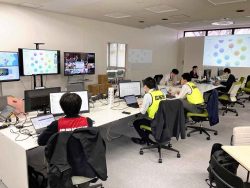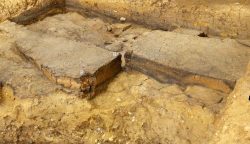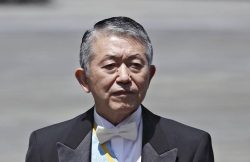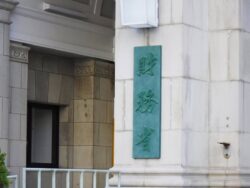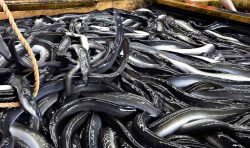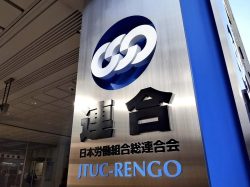TEPCO Begins 2nd Trial Retrieval of Debris at Nuclear Plant; Analysis Will Seek Information to Support Larger Operations
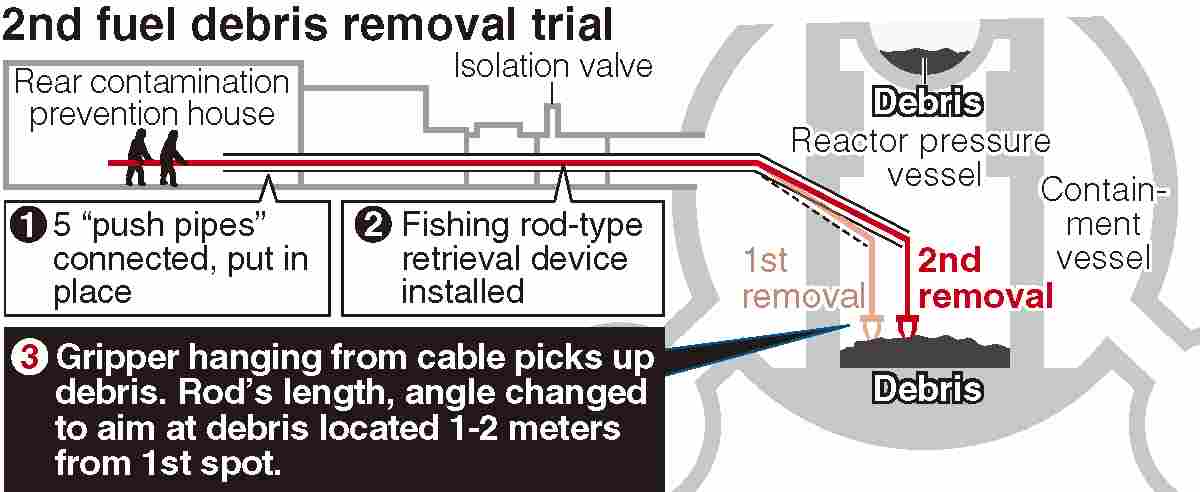
18:00 JST, April 15, 2025
Tokyo Electric Power Company Holdings, Inc. began its second removal of nuclear fuel debris from the No. 2 reactor at the Fukushima No. 1 nuclear power plant in a trial operation on Tuesday.
It will collect debris at a different location from the first trial last year and spend about 10 days moving it outside the reactor. The debris will be analyzed to gain information that may be useful in selecting the methods and tools needed for larger-scale removal in the future.
According to TEPCO, a retrieval device resembling a fishing rod that can extend up to 22 meters was inserted at 10:03 a.m. from the side of the reactor through a guide pipe. The device penetrated the isolation valve that separates the containment vessel from the outside.
From Wednesday onward, a claw-like gripper hanging down from the retrieval device’s cable will pick up pebble-like debris weighing up to 3 grams at the bottom of the reactor containment vessel.
This time, debris will be collected near the center of the containment vessel, about 1 to 2 meters away from the first collection point, by adjusting the length and angle of the device.
TEPCO will compare the composition and hardness of the two debris samples, to utilize the results for the next trial removals, of which there will be several. The comparison will also help with the selection of tools for the full-scale retrieval scheduled for the early 2030s.
The retrieval site may switch back to the first location depending on the situation inside the containment vessel, the company said.
In the 2011 Fukushima plant accident, meltdowns occurred in the Nos. 1 to 3 reactors, causing melted fuel to mix with the metal and structures inside the reactors to form debris. The debris continues to emit strong radiation that can kill people within minutes if they come close to it, requiring the operation to be done remotely. A total of about 880 tons of debris are estimated to exist in the Nos. 1 to 3 reactors.
In November, for the first time in more than 13½ years since the accident, TEPCO succeeded in taking out about 0.7 grams of debris. The removal operation is considered the toughest element of the entire decommissioning process, which the company aims to complete in 2051.
"Society" POPULAR ARTICLE
-
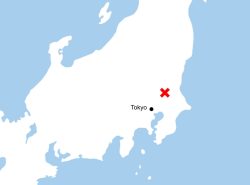
M4.9 Earthquake Hits Tokyo, Neighboring Prefectures
-

M7.5 Earthquake Hits Northern Japan; Tsunami Waves Observed in Hokkaido, Aomori and Iwate Prefectures
-

Tsukiji Market Urges Tourists to Avoid Visiting in Year-End
-
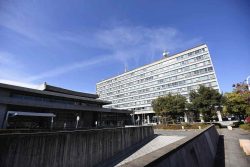
Israeli Tourists Refused Accommodation at Hotel in Japan’s Nagano Pref., Prompting Protest by Israeli Embassy and Probe by Prefecture
-
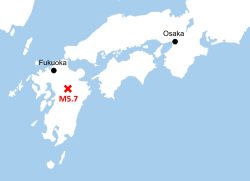
M5.7 Earthquake Hits Japan’s Kumamoto Pref., Measuring Upper 5 Intensity, No Tsunami Expected
JN ACCESS RANKING
-
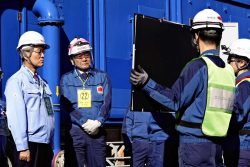
Keidanren Chairman Yoshinobu Tsutsui Visits Kashiwazaki-Kariwa Nuclear Power Plant; Inspects New Emergency Safety System
-

Imports of Rare Earths from China Facing Delays, May Be Caused by Deterioration of Japan-China Relations
-

University of Tokyo Professor Discusses Japanese Economic Security in Interview Ahead of Forum
-
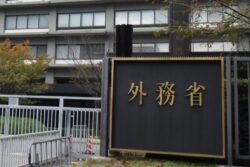
Japan Pulls out of Vietnam Nuclear Project, Complicating Hanoi’s Power Plans
-

Govt Aims to Expand NISA Program Lineup, Abolish Age Restriction





